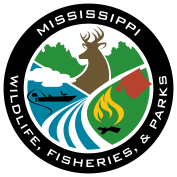
If you have questions about purchasing a license call 1-800-5GO-HUNT.
For landowners and land managers that want to manage wild turkeys on their property, it is important to understand their life cycle and what resources they use. Wild turkeys use a range of different habitat types during different seasons of the year to meet their nutritional and spatial needs.
During the fall, wild turkeys will start forming flocks that are usually segregated by sex and age classes. These flocks will start moving to their wintering areas, sometimes traveling several miles in search of mature upland and bottomland hardwood forests that provide both hard and soft mast. Large flocks can also be found in harvested crop fields during the winter months.
Following winter, wild turkeys will transition into the breeding season once spring begins. Flocks will begin to break up and male turkeys will begin to become territorial. Turkeys will move to areas with more abundant food resources, such as open spaces and managed timber stands, while gobblers will seek these areas for courtship and breeding opportunities. Hens will start nesting and search for areas with denser vegetation, such as field edges and cutovers, while managed pine stands, shaped by thinning and prescribed fire, will provide resources essential for both hens and gobblers.
Early in the summer, broods will begin to hatch, and hens will seek out habitat with low growing vegetation such as fields and managed timber stands. These areas will offer ample cover for poults, along with food resources like insects and soft mast, while allowing the hen to keep a close watch for potential threats. This habitat type will be extremely important for young broods until they develop their primary feathers for flight. Later into the summer hens and broods will form to create larger groups and shift to different habitats as food resources allow. During this time, gobblers have no role in brood rearing and will use mature timber stands and open fields, shifting their movement according to food resources throughout the summer months.
Wild turkey management relies entirely upon the habitat they prefer and use during their life cycles. Take the time to study these preferences and habits to enhance habitat on your property.
For more information on how to manage habitat for wild turkeys visit our website at
mdwfp.com/privatelands